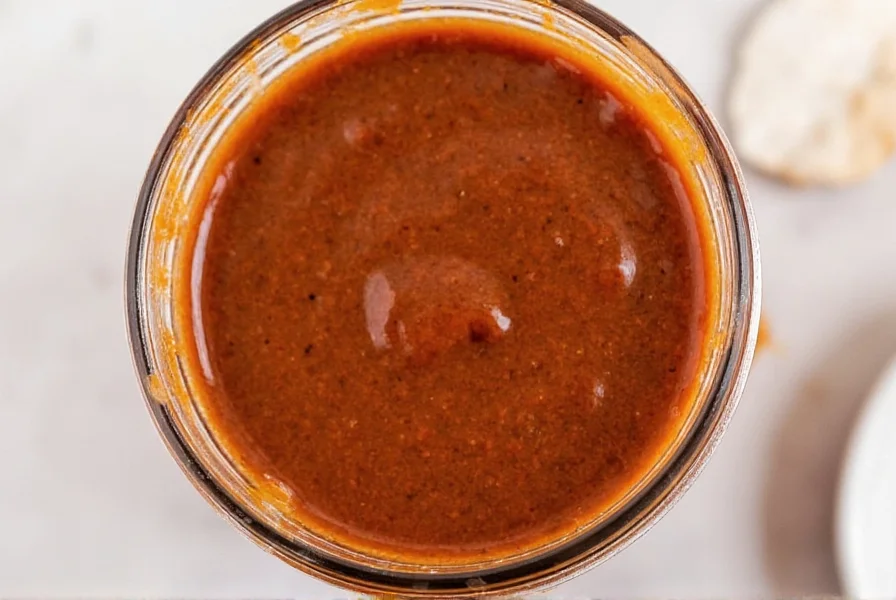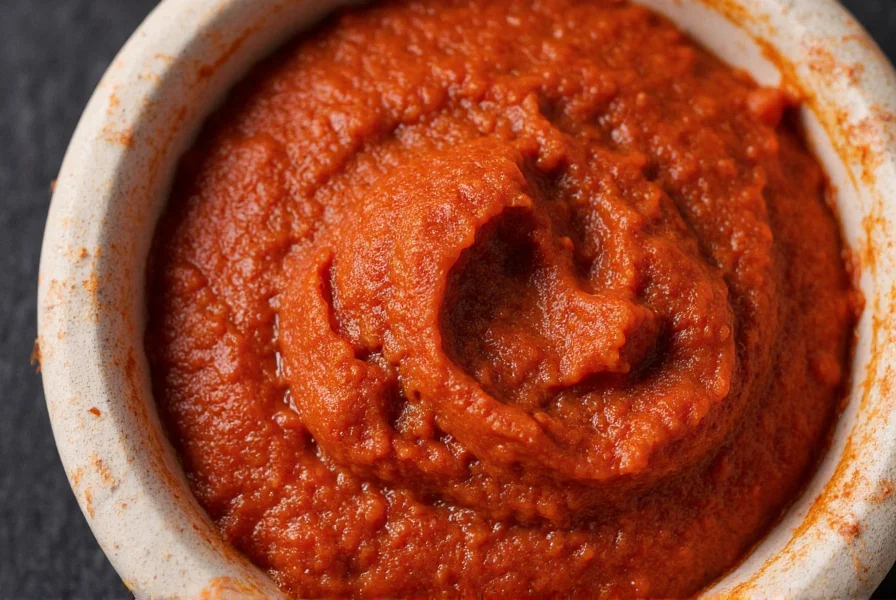Understanding how to properly use chipotle chili paste can transform your cooking. This guide explores its culinary applications, substitutions, and storage methods based on professional chef techniques and food science principles.
What Exactly Is Chipotle Chili Paste?
Chipotle chili paste originates from ripe jalapeño peppers that undergo smoking and drying to become chipotles. The paste form differs significantly from other chipotle products:
| Product Type | Texture | Flavor Profile | Best Uses |
|---|---|---|---|
| Chipotle chili paste | Thick, spreadable | Concentrated smokiness with moderate heat | Rubs, dressings, direct mixing |
| Canned chipotles in adobo | Whole peppers in sauce | Complex with tangy tomato notes | Stews, braises, sauces |
| Chipotle powder | Dry, fine | Intense heat with less smokiness | Dry rubs, spice blends |
The paste form provides consistent flavor distribution without adding excess liquid to recipes. Professional chefs prefer it for applications requiring precise heat control and even coating of ingredients. When evaluating chipotle paste vs adobo sauce, remember the paste lacks the vinegar-tomato base of adobo, making it more versatile for non-Mexican dishes.
Mastering Chipotle Chili Paste Applications
Successful use of chipotle chili paste requires understanding its behavior in different cooking methods. The optimal chipotle chili paste heat level depends on several factors:
- Acid balance: The vinegar content interacts with dairy and citrus - add paste before acidic components
- Heat activation: Smoky compounds release at 160°F (71°C) - incorporate early in cooking
- Oil solubility: Fat carries the capsaicin - always mix with oil first for even distribution
For marinades, combine one tablespoon chipotle chili paste with three parts oil and one part acid. This ratio prevents overpowering heat while ensuring flavor penetration. When making chipotle chili paste uses in sauces, bloom the paste in warm oil for 2-3 minutes before adding liquids to maximize flavor extraction.

Smart Substitutions and Comparisons
Running out of chipotle chili paste? Understanding proper chipotle chili paste substitute options prevents recipe failure. The best alternatives depend on your specific need:
- For smokiness without heat: 1 tsp smoked paprika + ¼ tsp cayenne per tablespoon of paste
- For liquid-based recipes: 2 tbsp canned chipotles in adobo (blended) per 1 tbsp paste
- For dry rub applications: 1½ tsp chipotle powder + ¼ tsp tomato paste per tbsp
When comparing best chipotle chili paste brands, check ingredient lists for additives. Premium versions contain only chipotles, vinegar, salt, and spices. Avoid products with gums, preservatives, or sweeteners that alter cooking behavior. For authentic flavor, seek brands specifying “100% smoked jalapeños” rather than “chipotle pepper blend.”
Storage and Shelf Life Management
Proper storage preserves the delicate balance of smoke and heat in chipotle chili paste. Follow these chipotle paste storage tips for maximum freshness:
- Refrigerate after opening (even if unopened, for long-term storage)
- Store in airtight container with oil layer on surface
- Use within 4-6 weeks for peak flavor (up to 3 months acceptable)
- Freeze in ice cube trays for portioned long-term storage
Signs of spoilage include mold growth, separation that doesn't reincorporate with stirring, or sour/fermented smell. Properly stored paste darkens slightly but shouldn't develop off-flavors. When making homemade chipotle chili paste recipe versions, add 1% citric acid to extend shelf life without altering flavor.

Practical Recipe Applications
These chef-developed applications demonstrate versatile how to use chipotle chili paste in recipes techniques:
Smoked Tomato Pasta Sauce (4 servings)
- 2 tbsp chipotle paste bloomed in olive oil
- 1 (28oz) can San Marzano tomatoes
- 3 garlic cloves, minced
- 1 tsp dried oregano
- Salt to taste
Directions: Bloom paste in 2 tbsp oil over medium heat 2 minutes. Add garlic, cook 1 minute. Add tomatoes and oregano. Simmer 20 minutes. Blend until smooth. Toss with cooked pasta and Parmesan.
Chipotle-Lime Mayo (Versatile condiment)
- 1 cup mayonnaise
- 1½ tbsp chipotle paste
- 2 tbsp fresh lime juice
- 1 tsp honey
- ¼ tsp garlic powder
Directions: Whisk all ingredients until smooth. Chill 1 hour before serving. Perfect for fish tacos, burgers, or as vegetable dip.
Final Considerations
Mastering chipotle chili paste requires understanding its unique properties among smoked pepper products. Unlike canned chipotles in adobo, the paste form delivers concentrated flavor without excess liquid, making it ideal for dry applications and precise heat control. When selecting products, prioritize those with minimal ingredients for authentic results. Remember that proper storage maintains the delicate balance of smoke and heat that makes this ingredient valuable. Experiment with small amounts first, as the concentrated nature means a little goes a long way in transforming ordinary dishes into restaurant-quality creations.
Frequently Asked Questions
Is chipotle chili paste the same as adobo sauce?
No, they're different products. Chipotle chili paste contains only blended smoked peppers and seasonings, while adobo sauce includes vinegar, tomatoes, and spices. The paste offers concentrated flavor without added liquid, making it more versatile for applications where moisture content matters.
How much chipotle paste equals one canned chipotle pepper?
Approximately 1½ teaspoons of chipotle chili paste equals one canned chipotle pepper in adobo sauce. This conversion accounts for the concentrated nature of the paste versus the liquid-based canned product.
Can I make chipotle chili paste from chipotle powder?
Yes, but results differ. Mix 1 tablespoon chipotle powder with 2 teaspoons water, 1 teaspoon vinegar, and ¼ teaspoon tomato paste. This creates a paste-like consistency, though it lacks the depth of true smoked pepper paste. For better results, add a pinch of liquid smoke.
Why does my chipotle paste taste bitter?
Bitterness usually occurs when paste is overheated or added to highly acidic ingredients too early. Always bloom chipotle paste in oil at medium heat (not high) and add it after acidic components like tomatoes or vinegar to prevent bitterness.











 浙公网安备
33010002000092号
浙公网安备
33010002000092号 浙B2-20120091-4
浙B2-20120091-4